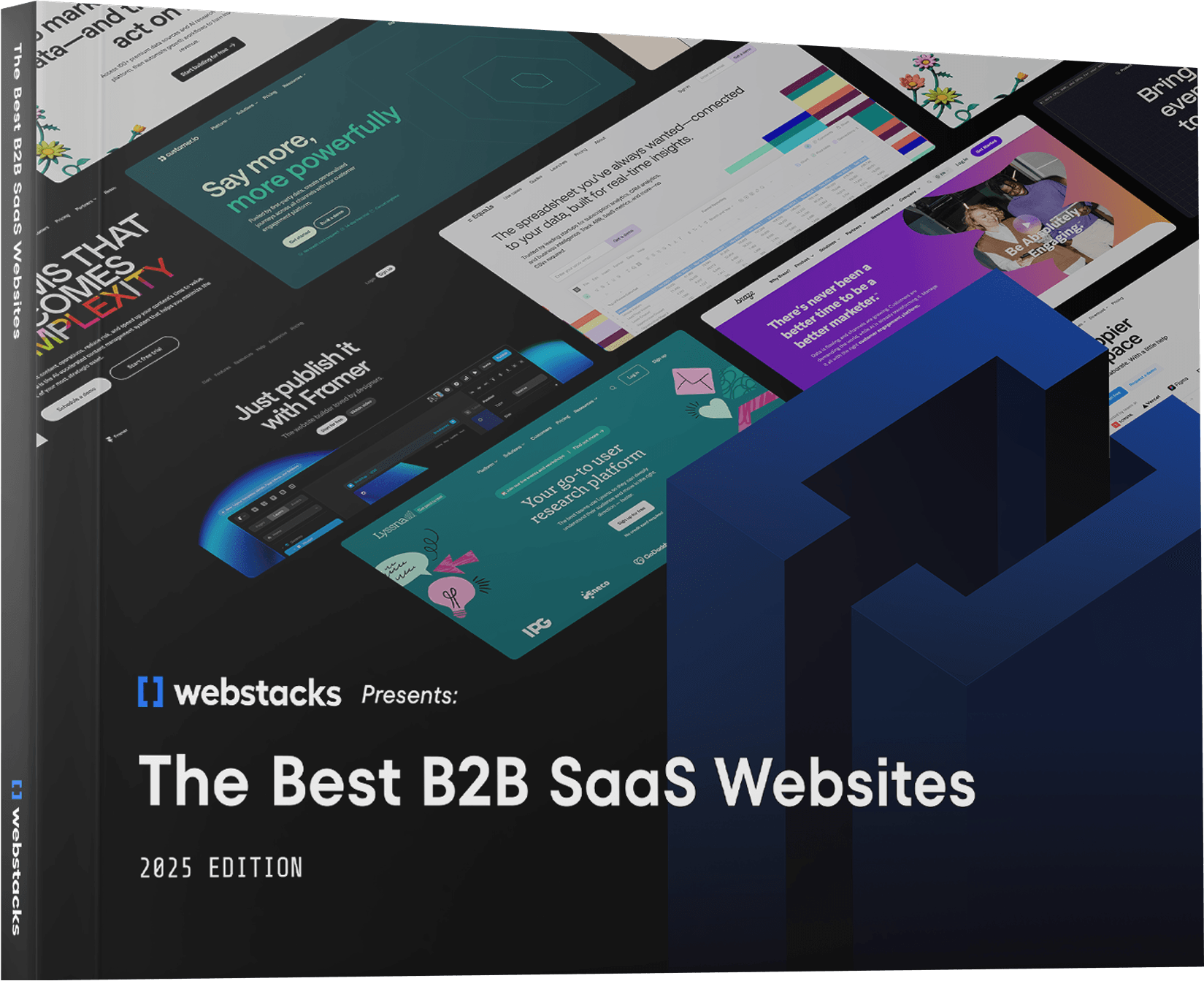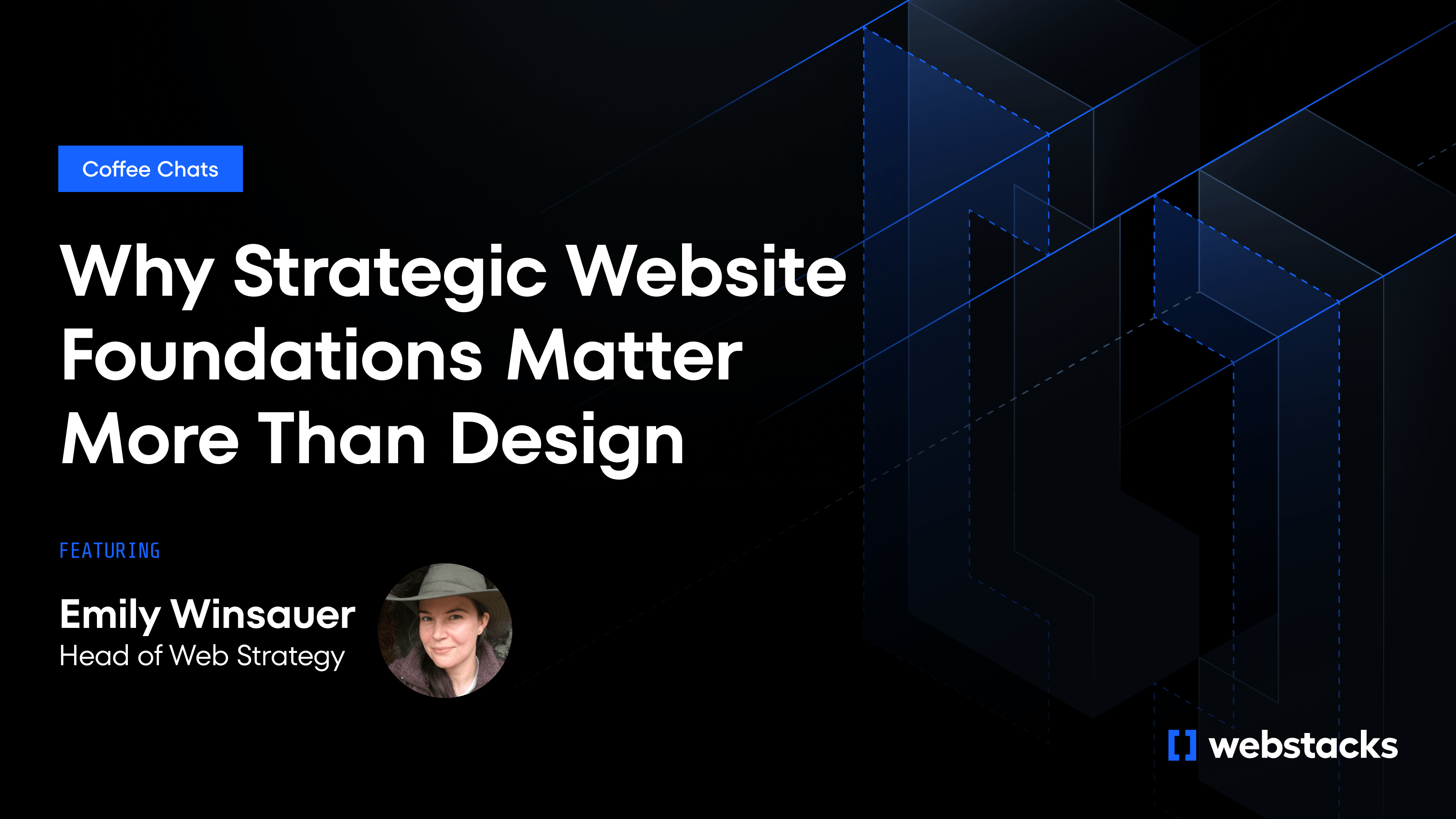Trust and credibility are at the heart of success in industries such as SaaS, fintech, and blockchain. When you're offering complex technologies, a clear and consistent corporate branding strategy cuts through the noise and positions you as a trusted industry leader.
Branding builds recognition and confidence. It lays the groundwork for long-term business relationships. At Webstacks, we've seen how a strong brand identity for startups and enterprises can elevate market presence and boost profitability.
This guide will walk you through how to build a corporate branding strategy that resonates with your audience and sets your business apart.

What Makes Building a B2B Corporate Branding Strategy Different from B2C?
A corporate branding strategy shapes your company's overall identity.
In contrast to B2C, B2B branding comes with unique challenges:
- Longer sales cycles: B2B decisions involve multiple stakeholders and extended evaluation periods.
- Complex decision-making: You're convincing several decision-makers with different priorities.
- Emphasis on expertise and reliability: B2B buyers want proven track records over emotional appeals.
- Technical complexity: B2B offerings require balancing technical accuracy with accessibility.
- Thought leadership: Being an authority in your field builds credibility.
How to Create Your Corporate Branding Strategy Step-by-Step
A corporate branding strategy requires a comprehensive approach. Though we present it in a specific order, we have to point out that branding is iterative and demands ongoing refinement with cross-functional collaboration.
1. Define Your Brand Purpose and Vision
Start by clarifying why you exist (mission), what future you want to create (vision), and your guiding principles (values).
For example, LinkedIn's purpose is "to connect the world's professionals to make them more productive and successful".
Try running workshops with these questions:
- Why does your company exist beyond profit?
- What future are you trying to create?
- What principles guide your decisions and behavior?
Your corporate branding strategy must be authentic, and lived internally before being marketed externally. It should guide your company's actions and resonate with your team.
3. Develop Your Brand Positioning
Craft a value proposition that clearly shows what makes your offering valuable and unique. For example, Slack's "Slack is where work happens" shows simplicity and power.
Determine your brand personality (formal vs. casual, technical vs. accessible) and tone of voice based on audience preferences and company values.
For example, blockchain companies need to balance technical credibility with accessibility. Fintech firms must balance trust and innovation.
You can use this template as you develop your positioning:
"For [target audience], [brand name] is the [category] that [key benefit] because [reason to believe]."
4. Design Your Visual and Verbal Brand Identity
This step involves creating visual elements (logo, colors, typography, imagery) and developing your verbal identity (messaging pillars, taglines, voice guidelines).
As a web design agency, Webstacks has found that branding isn't just visual, but also operational. Meaning your brand needs to work across all digital platforms.
As part of our branding process, we help teams build modular design systems that keep branding consistent and give them the freedom to create without constant developer involvement.

5. Implement Your Corporate Branding Strategy Across All Touchpoints
Your brand needs to be consistent across marketing materials, your website, social media, sales presentations, and customer interactions. Internal branding matters too, as employees should understand and embody brand values.
Audit your existing materials and develop implementation roadmaps for your new corporate brand. Digital platforms need special attention and should factor in responsive design principles.
6. Track and Evolve Your Corporate Branding Strategy
After you implement your new brand strategy, track its performance by monitoring:
- Brand awareness metrics (unaided recall, branded search volume)
- Perception metrics (sentiment analysis, Net Promoter Score)
- Engagement metrics (engagement rate, social media reach)
- Business impact metrics (market share, ROI)
In addition, performing a website performance audit aligns your online presence with your branding goals and delivers a great user experience.
Common Corporate Branding Strategy Issues and How to Avoid Them
Tech companies often stumble into these branding traps:
Lack of Differentiation in Corporate Branding Strategy
Tech companies often blend into a "sea of sameness," focusing on features rather than unique value.
To stand out, study competitors to identify market gaps and opportunities for differentiation.
Focus on solving customer problems in unique ways that competitors haven't addressed. Create a visual identity that uses distinctive colors, typography, and imagery that reflect your unique positioning.
Prioritizing Awareness Over Credibility
Chasing growth at the expense of trust backfires in the long run.
Build trust by grounding your brand in authentic values and real capabilities that your company can consistently deliver. Showcase your expertise through thought leadership content that demonstrates deep industry knowledge. Trust signals, such as customer success stories, provide social proof of your claims and reinforce your credibility.
Focusing on Company "Why" Instead of Customer Needs
Your origin story matters less than how you solve customer problems.
Stay customer-focused by centering your messaging on specific customer pain points rather than your internal company narrative.
Use customer-centric language that speaks directly to the challenges and aspirations of your target audience. Regularly incorporate customer feedback into your brand messaging to keep it relevant and resonant with the people you're trying to reach.
Brand Inconsistency Issues
Some brands change too frequently, creating confusion, while others never evolve, becoming stagnant and irrelevant. Both extremes undermine brand recognition.
Find balance by creating guidelines that support consistency while allowing for strategic evolution. Conduct regular brand audits to identify inconsistencies and areas needing alignment. Plan for gradual evolution that maintains core brand elements while refreshing aspects that need updating.
Specificity Problems
Tech companies often struggle with the balance between being too specific (limiting growth potential) versus too general (failing to differentiate).
You can strike the right balance by defining your audience precisely while leaving room for strategic expansion into adjacent markets. Explain complex concepts clearly without relying on technical jargon that alienates non-technical stakeholders.
Balance technical accuracy with accessibility by using analogies, visuals, and straightforward language to make sophisticated offerings understandable to your entire audience.
Trend-Chasing Instead of Authentic Positioning
Tech moves quickly, but jumping on every trending topic or visual style creates an inconsistent and inauthentic brand. Remember the metaverse hype and the way every tech company jumped on the bandwagon? You should avoid that.
You will stay authentic by remaining true to your core values and mission regardless of market fluctuations. Evaluate trends carefully against your long-term strategy before incorporating them into your branding. Focus on timeless branding principles that build lasting equity rather than chasing fleeting fads that might make you temporarily visible but ultimately dilute your brand identity.
Disconnection Between Brand Promise and Reality
Be aware of any potential disconnect between the customer experience and brand promises.
Keep promises by aligning your entire organization with your brand values through internal communication and training. Thoroughly train employees across departments on brand principles and customer experience standards. And act on customer feedback to improve products and services, closing any gaps between what you promise and what you deliver.
Nurture Your Corporate Branding Strategy
A strong corporate branding strategy drives growth for businesses, regardless of the industry you’re in.
Your brand is a strategic asset that deserves attention and investment. It's not a one-time project, but an ongoing commitment that requires consistent implementation and periodic refinement.
At Webstacks, we believe your website is a marketing asset and a part of your business infrastructure. We work with your team to build systems that scale, allowing you to reuse and remix content and design across touchpoints but still maintain brand consistency.
Our approach brings design, development, content, and strategy together in parallel workflows that speed up the project.




